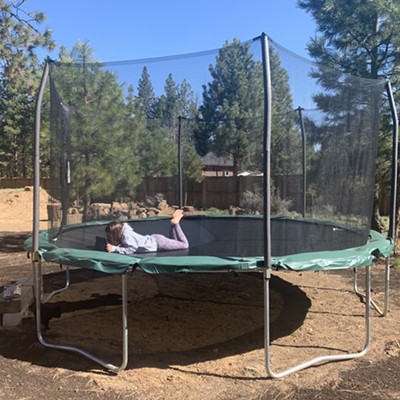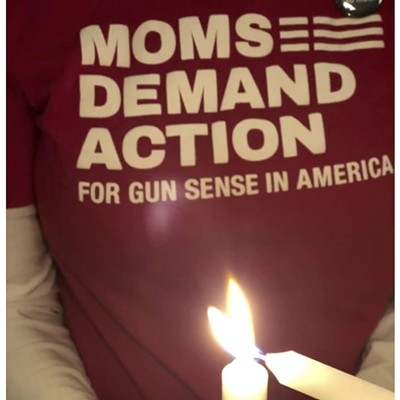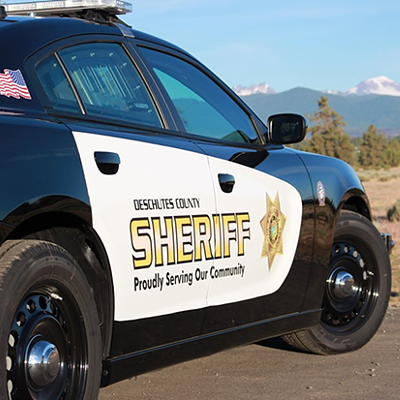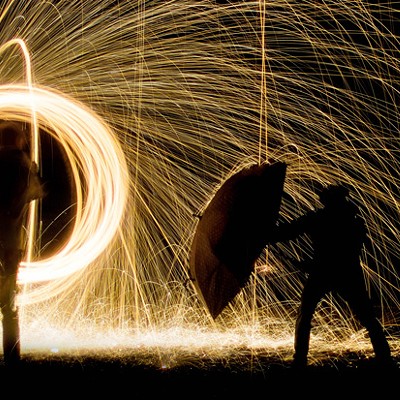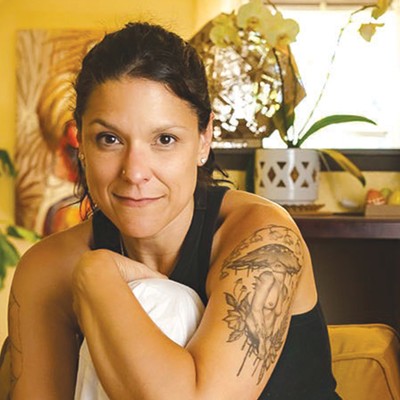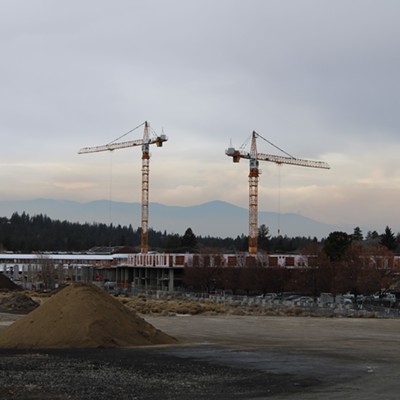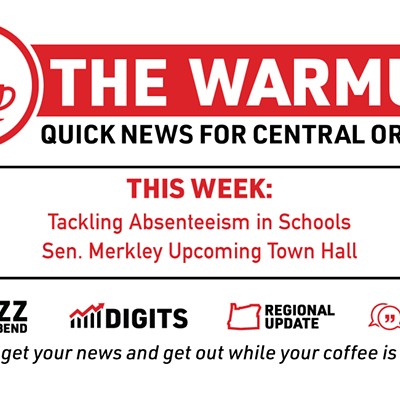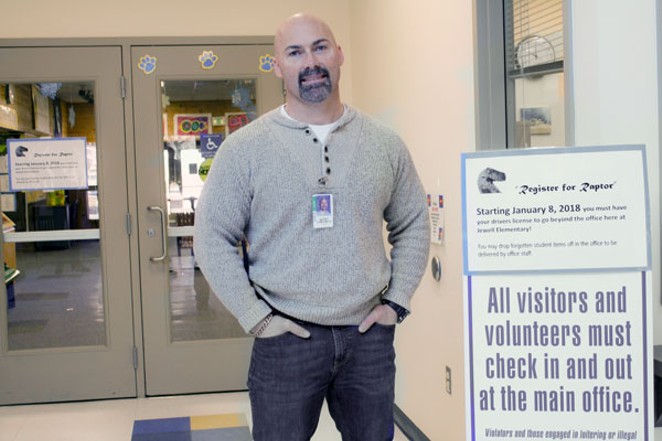
Imagine you're at work. You just filled your favorite mug full of coffee and return to your desk, adorned with photos of your family—smiling kids on vacation, soaking-wet dogs dripping from swimming in Cultus Lake—when your phone buzzes. It's a text from your high school-aged child. It's brief: "I love you." A smile runs across your face. Teens don't often text loving messages to their parents. Then all hell breaks loose. Everyone's phone in the office is going off at the same time: active shooter at the school.
Fortunately, Bend has avoided the tragedy of a school shooting, but the community isn't immune to its possibilities. Just this year, there have been three threats against schools, two found to be credible, one leading to the arrest of a 16-year-old student who allegedly intended violence at Bend Senior High School, and on Feb. 28 a 15-year-old La Pine High student was taken into custody by the Deschutes County Sheriff's office for an alleged threat of violence at the school involving guns.
On Feb. 26, after the Bend High arrest, Bend La-Pine Schools Superintendent Shay Mikalson sent a letter asking Oregon lawmakers to create a new crime covering "terroristic threat" at a felony level. Mikalson also asked the legislature to fund a threat assessment team and to extend maximum detention from 36 hours to 10 days for charges filed against youth with weapon offenses, or who have made threats against others.
Then on March 14, hundreds of Bend students participated in the National School Walk Out, a growing student movement to protest gun violence. Another is scheduled for April 20.
The debate over school safety is growing in intensity. Some call for arming teachers and a larger police presence in schools; others argue that's a waste of resources and the money should be spent on mental health resources. Others feel tougher gun laws, such as banning "assault weapons," is the answer.
Arming Teachers?
Deschutes County Sheriff Shane Nelson told the Source he's not opposed to the idea of arming some school employees, if the program is properly set up and vetted.
"They need to have appropriate training, review Oregon laws [and] they need to be proficient with firearms and backgrounded. If there is an active shooter situation, a CHL [concealed handgun license] holder could stop the threat almost immediately," Nelson said.
Student Lauren Hough, a senior at BSHS and an organizer for the 17 Days of Action Bend Instagram account, told the Source she strongly disagrees with the proposition of arming teachers. "Not only would it personally make me feel more unsafe to have more guns in school, but it is also widely unpopular among teachers in our district."
The school district isn't advocating for or against arming teachers, said Julianne Repman, director of communication and school safety for the district.
"School safety is a multifaceted issue that will need a multifaceted approach," Amy Sabbadini, an International Baccalaureate teacher at BSH said. "The ratio of nurses, counselors, teachers and other important providers to students is far from ideal.
"This community is going to have to decide if they believe in investing in us, in our youth, in being proactive, not reactive," she said.
Secure Lobby Technology
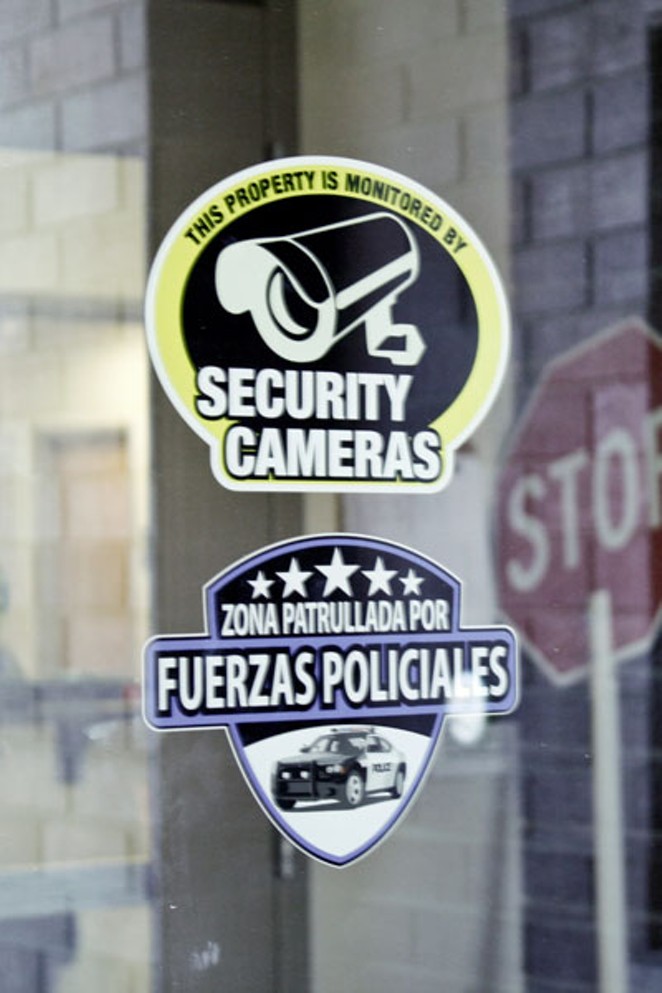
To date, the district has partnered with Texas-based Raptor Technologies in an effort to up the safety at schools. The district has been using Raptor's safe lobbies system, meaning visitors have to present valid identification, which is scanned and checked against the sex offender registry and saved into a database.
Repman said Raptor provides schools with a layer of security that they didn't have when using the old paper and pencil volunteer management. She said Raptor's service costs the district $540 per year.
Many Bend schools already have the Secure Raptor entry, including Buckingham, Highland Magnet, R.E. Jewell Elementary, Silver Rail Elementary, and Pacific Crest and High Desert middle schools.
Meanwhile, parents have done their own research. A parent on a Facebook forum concerning gun safety in Bend-La Pine wrote in describing how she'd checked on safety at her child's school, High Desert Middle, finding officials there had recently purchased inexpensive magnetic frames to secure doors in an emergency—though district officials did not confirm that by press time.
None of the high schools have the secure entry areas yet, but the 2017 school bond will allow construction of secure lobbies, Repman said. Construction plans have been greenlighted to happen during the school year, not just in the summer, to get the lobbies up and running as soon as possible, according to a letter from Mikalson Feb. 26.
"The purpose of a secure lobby is to both prevent and mitigate unauthorized entry," Repman said. The secure lobby gives us natural surveillance of visitor/volunteers, limits access to the school and gives more efficient screening of persons entering the school."
When it comes to keeping a student or another person with a weapon off of school grounds, Repman said the district can create safety plans for those who have been identified as posing a previous or potential threat to our schools, but can't predict the unexpected.
"Like our homes, retail shops and other public places, we cannot stop an unexpected threat from entering, but we can certainly prepare for how we will respond," she said.
Tackling Gun Laws
Another proposal is stricter gun laws. In October 2017, Sen. Ron Wyden (D-OR), helped introduce The Automatic Gun Fire Prevention Act, which would close a loophole that allows semiautomatic rifles to easily be modified—like "bump stocks"—to fire at the rate of automatic weapons. Wyden also helped introduce the Background Check Completion Act, which would require a completed background check for every gun buyer who buys a gun from a federally-licensed gun dealer. When a criminal background check indicates a firearm purchaser may have a criminal record, the FBI would try to determine whether the purchaser can legally buy a gun.
Students including Hough support that. "I feel the most strongly about legislation that needs to be passed around gun control," Hough said. "Although I believe safety measures are important, nothing outweighs access to guns."
Sheriff Nelson said we have some good laws in place right now, but he could see making "bump stocks" illegal.
Police in Schools
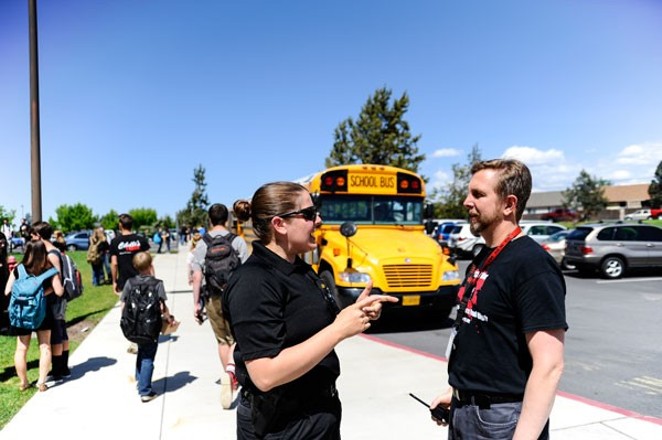
Upping the police presence in schools is another option—though Marc Shindler, head of the Justice Policy Institute, said in a story on National Public Radio that there's no evidence to show that adding School Resource Officers actually results in safer schools. "In fact, the data really shows otherwise—that this is a largely failed approach in devoting a significant amount of resources but not getting the outcome in school safety that we are all looking for," he said in that story. The Parkland, Fla., shooting had an armed SRO who remained outside the school, instead of entering the school and looking for the subject, according to a story on CNN.com.
"The Parkland, Florida, situation has everything to do with two agencies admittedly not handling calls appropriately," Nelson said. "Threats were reported to law enforcement and the FBI did not follow up."
Bend Police Department Lt. Clint Burleigh said his department finds that how they deploy their SROs and officers within and around the schools has been successful in many ways.
"It isn't all about responding to calls within the schools, it is about creating an environment that is safe for the students. We want to have a positive relationship with students, parents and staff throughout the schools," he said.
According to Burleigh, there were two SROs in the late 1990s, at Mt. View High and BSHS. Currently, there are four SROs, one at each main high school.
"The SRO at Marshall High School is also the primary officer for Skyview Middle School, Pilot Butte and Cascade Middle School. Our Summit SRO also covers Pacific Crest. We cover all the other Bend-La Pine schools within the city limits of Bend," Burleigh said.
Sgt. William Bailey, DCSO public information officer and records supervisor, said their office currently has four SROs: one that splits time in the La Pine area schools, one in Sisters schools and two that split time in Bend and Terrebonne at High Desert Middle, Tumalo Elementary, Buckingham Elementary and Terebonne Elementary. Burleigh said Bend PD is considering expanding the program with the addition of the new Bend high school around 2021.
"Our philosophy is to have an SRO in each high school, and spending a great deal of time within the middle schools. Allowing for these positive relationships is beneficial for the entire community," Burleigh said.
"We see every year how the positive relationships make for safe schools," he added.
Angela Chisum, a parent in the Bend-La Pine district, told the Source she's not sure additional officers are the solution to school safety.
"Bloated class sizes themselves are a security issue," Chisum said. "The more students a teacher has, the less they are able to connect with each student, the less chance to identify issues that may become a bigger problem."
A Riot Mentality—and a Public Health Approach?
In "Thresholds of Violence" by Malcom Gladwell, the author quotes sociologist and Stanford professor Mark Granovetter's research on "situations where outcomes do not seem intuitively consistent with the underlying individual preferences." Gladwell said Granovetter used riots as one of his main examples in his research, because "a riot is a case of destructive violence that involves a great number of otherwise quite normal people who would not usually be disposed to violence."
Gladwell encourages looking at the school-shooting epidemic through Granovetter's model, "to think of it as a slow-motion, ever-evolving riot, in which each new participant's action makes sense in reaction to and in combination with those that came before." In Gladwell's article, sociologist Ralph Larkin argued that Columbine High School shooters Eric Harris and Dylan Klebold laid down the "cultural script" for the new generation of school shooters. Gladwell wrote that Larkin looked at 12 major school shootings after Columbine, between 1999 and 2007, finding that in eight of those the shooters made explicit reference to Harris and Klebold. The effect was, "to make it possible for people with far higher thresholds—boys who would ordinarily never think of firing a weapon at their classmates—to join in the riot."
In "Here's How to Prevent the Next School Shooting, Experts Say," for NPR this month, author Anya Kamenetz highlighted the eight-point "Call for Action to Prevent Gun Violence in the United States of America," the product of work by Matthew Mayer, a professor at Rutgers Graduate School of Education, along with 18 other professors. In that call for action, the authors note that prevention of gun violence needs to take a public health approach. For example, "instead of waiting for people to be rushed to emergency rooms with heart attacks or the flu, you go into the community: with vaccinations, screenings, fruits and vegetables, walking trails and exercise coaches." With regard to gun violence, Kamenetz wrote, "you do your best to lower the background levels of bullying and discriminations. You track the data and perform what is called 'threat assessments' on potential risks."
Threat Assessment Teams
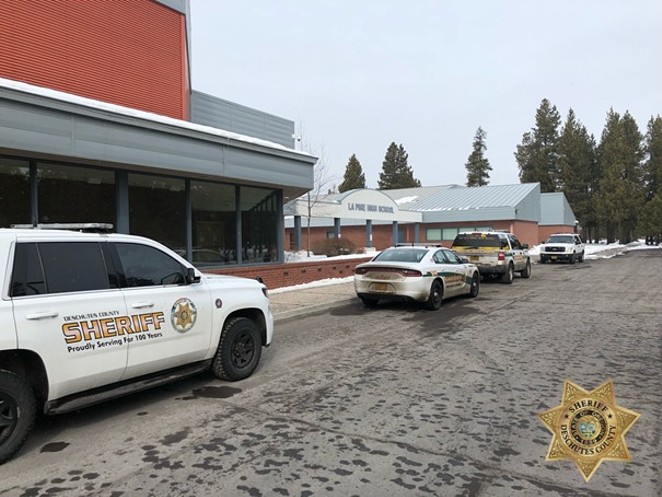
While Superintendent Mikalson called for more funding for threat assessment teams in his call to action to the Oregon legislature, teams like that are already in place in some capacity in BLPS.
A threat assessment team consists of the school principal, a school counselor, school psychologist and a school-based police officer. The Bend-La Pine school district is a member of the High Desert Student Threat Assessment System—a set of assessment protocols and safety planning procedures overseen and administered by a team comprised of schools, law enforcement, public mental health, the courts and juvenile corrections to promote safe school environments.
"We have worked with the school district and High Desert ESD to implement a student threat assessment program," Burleigh said. "We can work with our community partners, to include Deschutes County Mental Health, to assess threats within the school.
"Our goal is not to arrest people, but to make sure each person is given the proper tools to be successful."
Mental health is also part of the equation. In his letter to families Feb. 26, Superintendent Mikalson added, "This school year, we added additional counselors to our secondary schools. We currently have more than 30 counselors who meet with students each day at our middle and high schools. In addition, schools have psychologists who provide student support and advocacy at all elementary, middle and high schools. We also employ two full-time therapists who support our highest needs students at our schools in Bend, La Pine and Sunriver."
Still, some parents see funding as a major barrier to moving forward.
"We need to properly fund our schools if we really want to solve security issues," parent Chisum said.
"Perhaps part of that would go to security and infrastructure, but smaller class sizes and appropriate counselor-school psychologist rations are our best hope at preventing a student from becoming a security risk in the first place."

